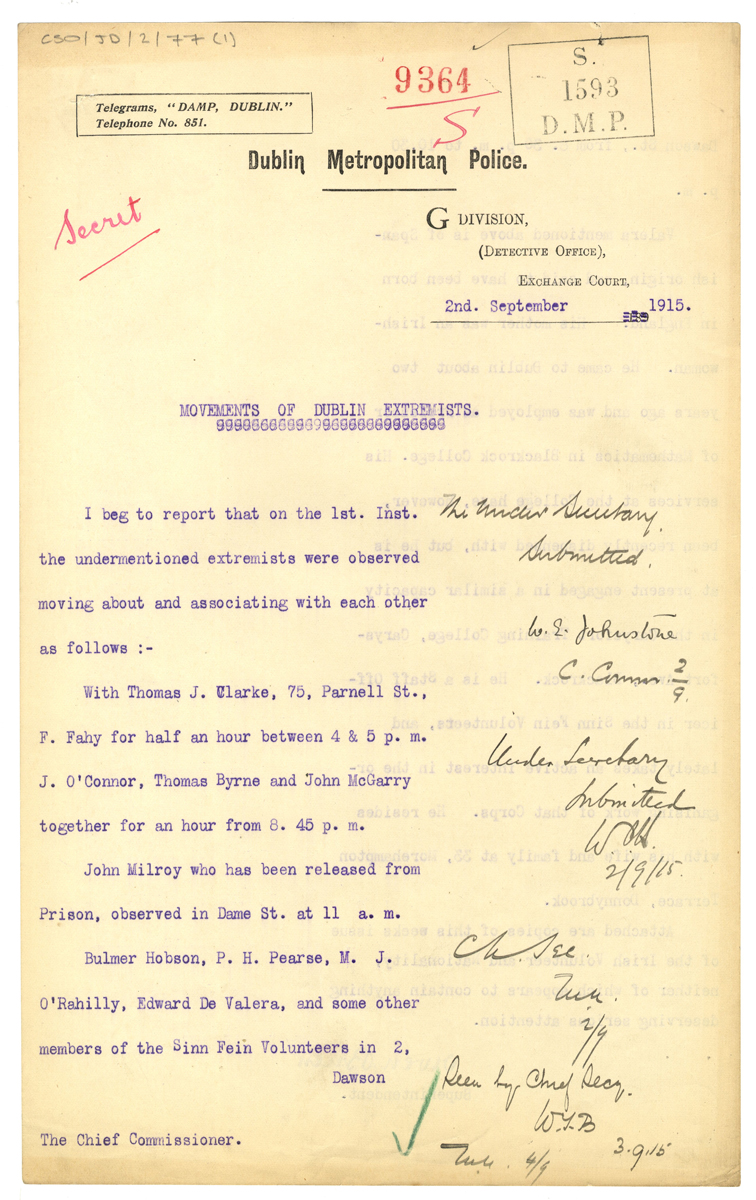Object: CSO Report - Movement of extremists
National Archives of Ireland
Object title: Chief Secretary's Office, Crime
Branch: movements of extremists (29 May 1915-20 April 1916).
Physical characteristics: Foolscap sheets of
paper, typed reports, manuscript annotations in coloured inks.
Object Description: The Chief Secretary’s Office, Crime Branch: Movement of Extremists collection is a series of daily reports produced by the Dublin Metropolitan Police (DMP) Detective Department on the movements and associations of pro-independence suspects. The reports were compiled by Superintendent Owen Brien and submitted to the Under Secretary for Ireland, Sir Matthew Nathan, at Dublin Castle. The reports describe Republican activity in Dublin during the 11 months preceding the Easter Rising. They begin on 1 June 1915 and end on 20 April 1916, just 4 days before the beginning of the Rising.
The reports detail intelligence gathered at a number of key city centre locations, most notably the shop of Thomas J Clarke at 75 Parnell Street and the Irish Volunteers Office at 2 Dawson Street. Major events which took place in 1915 and 1916 are recorded in the reports, including the funeral of Jeremiah O’Donovan Rossa and the Annual Convention of Irish Volunteers. There are over 230 individuals referred to in the reports, principally members of the Irish Volunteers, the Irish Republican Brotherhood and Sinn Féin.
The reports are released on the National Archives website on a weekly basis here.
How is the object associated with the Easter Rising 1916 and in
what way does it make a unique contribution to our understanding
of the event?
The reports demonstrate that the police were watching
“extremist suspects” very closely in the year leading
up to the Rising. However, there’s no indication that they
knew what they were talking about at these meetings, or that they
were planning a Rising. These were the days before bugging or
telephone taps.
Are there any broader issues that can be illustrated through
the story of the object?
Police surveillance continues to be a reality to this day. The
broad debate about modern fundamentalist terrorism and the limits,
if any, on police monitoring of suspects, brings up questions of
privacy, civil liberties, and the widespread use and tracking of
use of the internet, something unimagined in 1916.
Download the Junior Cycle lesson plan





















